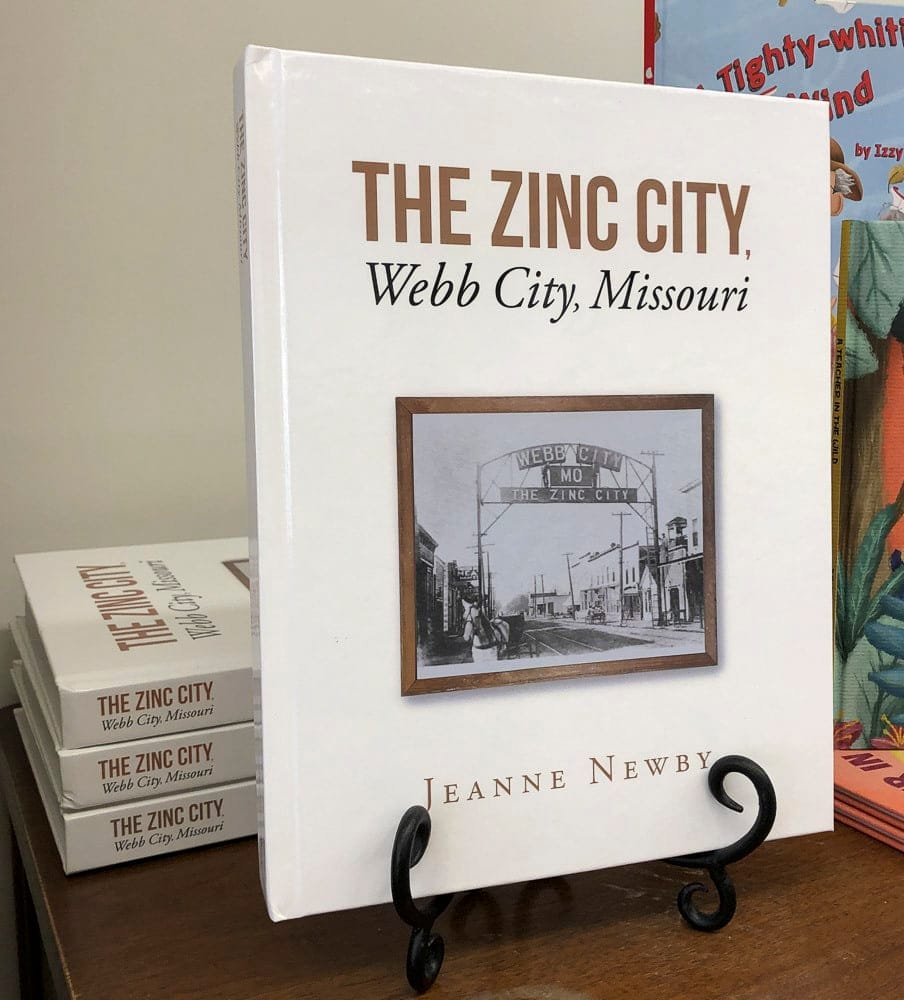When I first became interested in the history of Webb City, I talked with many “old timers,” and I heard many tales that had been passed on to them or that they had remembered from their childhood. One of those stories that I have often shared turns out to be one of those “uh-ohs” that wasn’t quite right.
I had been told that the Joplin Airport located on Webb City Road (now MacArthur Drive) was originally called the Webb City Airport and that Webb City sold it to Joplin many years ago. Well, many years later when I finally got around to doing some research on the airport, I found the … “rest of the story,” and I will share it and hope to make the matter right.
The story starts way back in spring of 1919 when a new company was established in Joplin at Third and Kentucky streets, and it was known as the Hiland-O’Brien Airplane Co. The goal of this new company was to manufacture aircraft of the Curtiss type. They were also planning to head up an aviation school with the chief pilot being Thomas Webber, who had recently returned from overseas service.
By the fall of 1919, this prosperous company now listed as the Hiland Airplane Co. had completed its seventh airplane in just a few short months. It was suggested that Joplin should become a port of call for cross country fliers by establishing a municipal landing field with hangars.
As the Hiland Airplane Co. would complete each plane they would be launched from Schifferdecker Park. Many pilots would come to this area to have their planes repaired, and they also used the park for landing and taking off. Many stated that they would be willing to use the services of Hiland Airplane Service except for the lack of suitable landing fields. The nearest airplane repair service and factory other than Joplin was in Chicago.
It wasn’t until October 1927, eight years later that those plans were to become a reality. Plans were made to acquire 100 acres close to the intersection of Seventh and Schifferdecker streets. The land purchased was just west of the Empire District substation. The main advantage of this location was that the Schifferdecker Golf Links were located to the north and the Oak Hill Golf Links were located to the south, providing emergency landing fields if needed. The Joplin Municipal Airport was dedicated on Nov. 11, 1927 and it included 160 acres between Seventh and 13th streets.
By the following January, 1928, it was announced that a company known as the Ozark Association had received the contract to provide school, transport and concession rights at the municipal airport. Ozark built a new hangar and started out with four aircraft.
To get the public better acquainted with the sensation of flying, Ozark offered scenic tours of the region. The trip included a flight over Galena, Riverton and Shoal Creek Valley at a cost of $5 for each passenger. The flights went out at 2, 4, and 6 o’clock each afternoon. For $12.50, a person could see the sights of Galena, Lowell, and Baxter Springs, Commerce, Miami, Seneca and Neosho. The most elite flight, for $25, would show the beauty of the Ozarks by flying over Monett, Aurora, Crane, Galena, Branson, Hollister, Lake Tanneycomo, Ozark Dam, Forsythe and Springfield.
Ozark Association received a bit of competition when Southwestern Air Fast Express joined the airport in March 1929 and they offered flights from Joplin to Tulsa for $13 and from Joplin to St. Louis for $33.
By 1932, Joplin had become a popular stopping point for many aircraft, and the need for a new airport was in demand. Not to mention, the danger of the high tension lines of the Empire District Electric Co., which cut across the corner of the airport on Seventh St.
Joplin was looking at a 400-acre tract of land just north of Stone’s Corner and just north of the Joplin-Webb City Road. As the land was being cleared in preparation of the new airport, the uprooted trees were cut into stove wood by unemployed forces and were furnished to needy families through the Health and Welfare Association.
The Junge Municipal Airport was one of the best airports in the area. To make it known to the world and any planes flying overhead, gravel filled trenches which spelled out Joplin, Mo. were completed in February 1934. The letters, 40 feet across, looked enormous from the ground, but from the air they were merely large enough to distinctly outline the words. Perfectly proportioned and spaced, the gravel-filled trenches were dug by the CWA workmen, who were helping to build the new airport.
History was made in April 1936 when a twin-engined plane landed at the Joplin Municipal Airport, marking it the largest craft to land at the new airport. Mr. Pomeroy was the pilot, and he was accompanied by W. Alton Jones, formerly of Webb City who had moved to New York with the Cities Gas Service Co.
The 750-pound revolving aeronautical beacon was installed at the airport in the summer of 1936. In April of 1937, Joplin Municipal Airport was approved as a daytime landing field for mail planes and commercial planes hauling passengers.
The hangar was completed in December 1937, with the offices on the north side of the building being highly modern with gas for heating and water from the airport’s deep well. The first night flight, which required turning on of the runway lights, was recorded in July of 1945.
So, even though Webb City has shared the airport with Joplin all these years, it truly was originally the Junge Municipal (Joplin Municipal) Airport. Many houses located on the north side of the Joplin-Webb City Road (MacArthur Drive) were moved to different areas, but most were moved to Stone’s Corner, including the home of Ma Barker and her boys.

Jeanne’s new book, “The Zinc City, Webb City, Missouri” is now available at Webb City Chamber Office.

The Webb City Sentinel isn’t a newspaper – but it used to be, serving Webb City, Missouri, in print from 1879-2020. This “newspaper” seeks to carry on that tradition as a nonprofit corporation.
© All Rights Reserved 2025
DIY website design by Bob Foos